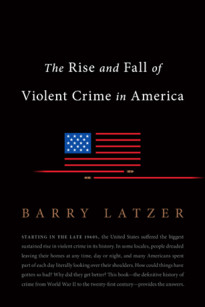“I am the law and order candidate,” says Donald Trump, sounding an awful lot like Nixon in 1968. The Trump campaign does not shy away from borrowing tactics from the 37th President’s playbook—and the racial unrest and the murders of police officers in Dallas and Baton Rouge has given Trump more reason to emulate Nixon’s law and order rhetoric.
But is today’s worrisome crime climate as dire as it was in Nixon’s day?
In the Wall Street Journal, Jason L. Riley compares the lawlessness of the 1960’s with today:
Forty-eight summers ago the country was in a bad way, and Nixon wisely bet that voters didn’t trust his opponent, liberal Democrat Hubert Humphrey, to restore some level of sanity, especially with respect to civic order. In the final weeks of the 1968 campaign, Nixon worked these lines into nearly every stump speech. “In the past 45 minutes, this is what happened in America,” he would say. “There has been one murder, two rapes, 45 major crimes of violence, countless robberies and auto thefts.”
This was no exaggeration. The 1960s launched the most protracted rise in violent crime in the U.S. in more than a century. Disorderly protests, riots and acts of domestic terror became almost commonplace. Between 1960 and 1970, violent-crime rates doubled. Murder rates increased by 55% and robberies rose by more than 90%. As the decade progressed, things only got uglier. Between 1964 and 1971, there were more than 300 riots in more than 250 cities. The worst of the rioting was 1968, which saw the assassinations of Martin Luther King Jr. in April and Robert F. Kennedy in June.
“By the end of the 1960s, a great fear gripped America,” writes criminologist Barry Latzer in his new book, “The Rise and Fall of Violent Crime in America.” “It was largely a fear of crime, especially violent assaults, whose frequency had skyrocketed.” Surveys of big-city residents at the time showed that one of every two people was afraid to go out alone at night. “African Americans were even more frightened than whites, women were more afraid than men, and seniors were most terrified of all,” writes Mr. Latzer.
If you think the Black Lives Matter movement rhetoric today has been tragically irresponsible, try comparing it with what black militants were saying during the Nixon campaign. On Feb. 17, 1968, 6,000 people showed up at the Oakland Auditorium to celebrate the birthday of Huey Newton, co-founder of the Black Panther Party. Newton couldn’t attend because he was in jail for shooting dead an Oakland police officer. The gathering doubled as a Free Huey rally. H. Rap Brown called Newton “our only living revolutionary in the country today” adding, “He has paid his dues. How many white folks did you kill today?”
James Forman, another Black Panther leader, went even further. In the event of his assassination, he said, “I want 30 police stations blown up, one southern governor, two mayors and 500 cops, dead. . . . And if Huey is not set free and dies, the sky is the limit.” Free Huey rallies were held that year in major cities across the country.”
Read the full article here.
Read more of Jason Riley in Please Stop Helping Us: How Liberals Make It Harder for Blacks To Succeed from Encounter Books.
And for more on the history of violent crime, read criminologist Barry Latzer’s new book The Rise and Fall of Violent Crime in America also from Encounter Books.
